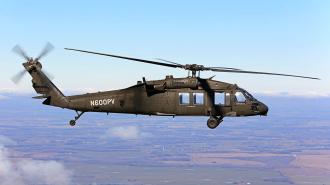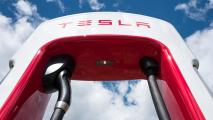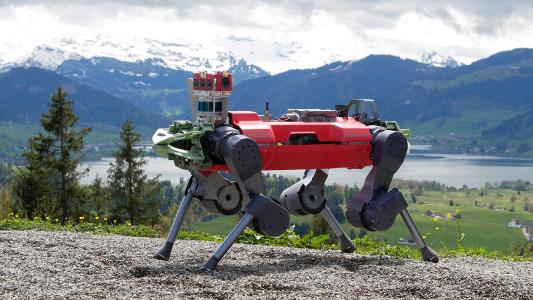A new Black Hawk helicopter just carried out a first-of-its-kind mission: taking off, maneuvering, and landing without any people on board.
The challenge: The Black Hawk helicopter has been a workhorse of the U.S. Army for more than 40 years, and today, the Army has more than 2,000 of the aircraft.
Unfortunately, not every Black Hawk mission is a success, and mishaps are often caused by a combination of human error and a degraded visual environment (DVE) — meaning the pilot couldn’t see due to something like fog, smoke, or rain.
“With reduced workloads, pilots can focus on mission management instead of the mechanics.”
Stuart Young
The idea: In 2014, DARPA established the Aircrew Labor In-Cockpit Automation System (ALIAS) program. Its goal was to create a kit that could be integrated into existing military aircraft — like the Black Hawk helicopter — to give them autonomous capabilities.
At the time, the plan was for ALIAS to serve as a co-pilot for human operators. Aircraft could then fly with fewer crew members, and those that were on board could focus on the bigger picture, even while navigating difficult conditions.
“With reduced workloads, pilots can focus on mission management instead of the mechanics,” Stuart Young, program manager in DARPA’s Tactical Technology Office, said. “This unique combination of autonomy software and hardware will make flying both smarter and safer.”
What’s new? In 2018, DARPA — armed with a system that had successfully proven itself in other aircraft — announced plans to integrate ALIAS into a Black Hawk helicopter. The following year, Army pilots made the first of many ALIAS-assisted test flights in the helicopters.
DARPA has now taken the tech to the next level, conducting two test flights with a completely uncrewed Black Hawk — during the 30-minute-long flights, ALIAS handled liftoff and landing, executed maneuvers, and even avoided simulated obstacles on its own.
“With ALIAS, the Army will have much more operational flexibility,” Young said. “This includes the ability to operate aircraft at all times of the day or night, with and without pilots, and in a variety of difficult conditions, such as contested, congested, and degraded visual environments.”
“If every person counts and a machine can do it, then let the machine do it.”
James McConville
The big picture: ALIAS is just one example of automation’s growing role in the U.S. military — it’s also been developing AI jet pilots, robotic watchdogs, semi-autonomous tanks, and more.
Not only could these systems help protect military members, they could also help the military address two growing problems: fewer enlistees and a flatlining budget.
“If you put four people in a vehicle, you have to hire four people,” James McConville, the Army’s chief of staff, said in 2020. “The second thing is you’ve got to protect them and build around them. Then you have to start thinking about all the other things that go in that.”
“So if every person counts and a machine can do it, then let the machine do it,” he continued.
We’d love to hear from you! If you have a comment about this article or if you have a tip for a future Freethink story, please email us at tips@freethink.com.






